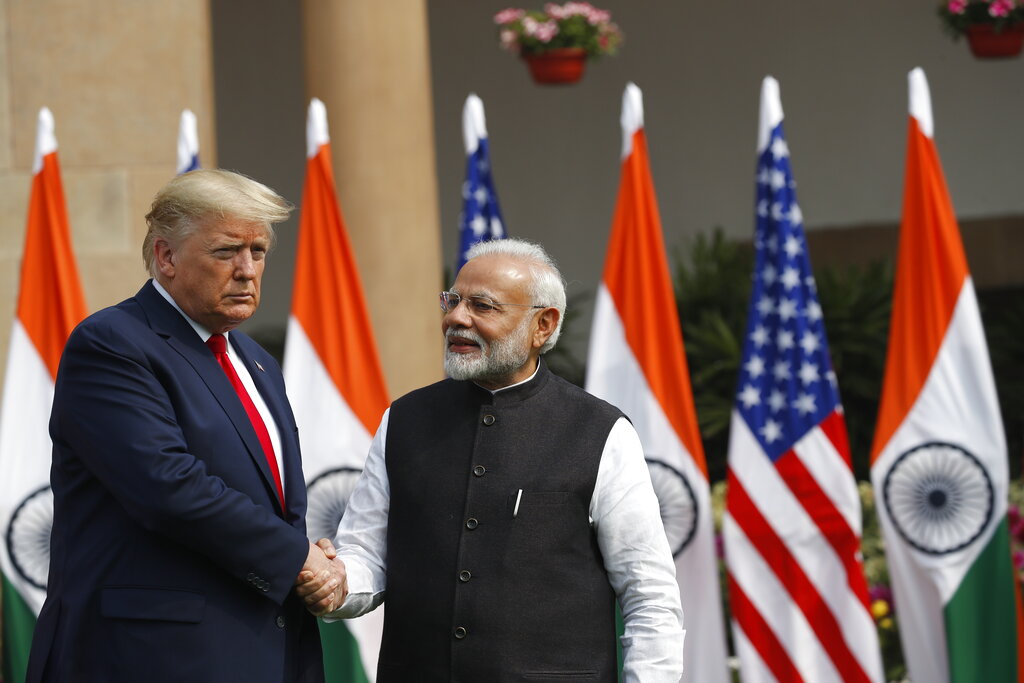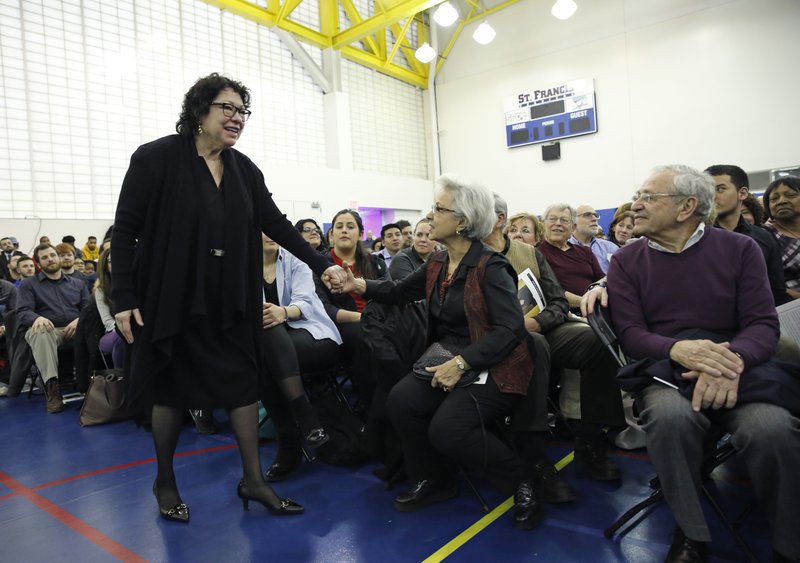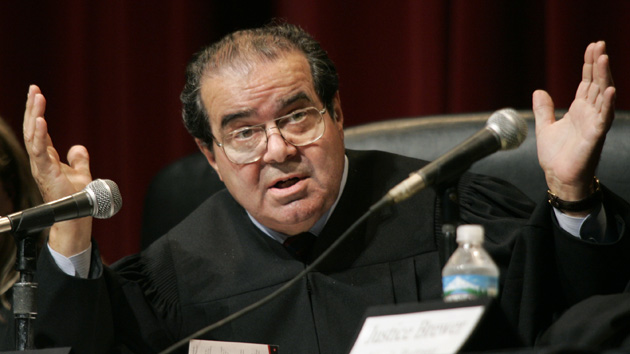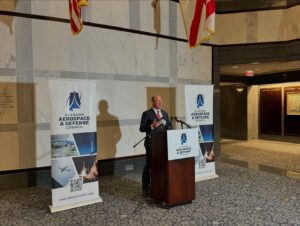Supreme Court puts curbside voting on hold in Alabama

The Supreme Court on Wednesday put on hold a lower court order that would have permitted curbside voting in Alabama in November. The justices’ vote was 5-3, with the court’s three liberals dissenting. As is typical when the Supreme Court acts on an emergency basis, the justices in the majority did not explain their decision. It was not clear how many counties might have offered curbside voting, allowing people to vote from their car by handing their ballot to a poll worker. Justice Sonia Sotomayor, in a dissent joined by Justice Stephen Breyer and Justice Elena Kagan, described the lower court’s order allowing curbside voting in November as “modest,” and she said she would not have put it on hold. “It does not require all counties to adopt curbside voting; it simply gives prepared counties the option to do so. This remedy respects both the right of voters with disabilities to vote safely and the State’s interest in orderly elections,” she said, noting that 28 states permit curbside voting. The decision stemmed from a lawsuit the NAACP Legal Defense and Educational Fund, the Southern Poverty Law Center and the Alabama Disabilities Advocacy Program filed on behalf of voters with health issues who were concerned about the risk of COVID-19 at the polls. The state’s Republican attorney general and secretary of state sought to block a lower court’s ruling in the case that would have let counties offer curbside voting. Lawyers for the state argued that since Alabama does not have a law expressly permitting curbside voting, that it should not be allowed. “I am very enthusiastic that the Supreme Court of the United States has seen fit to secure Alabama’s election integrity by ruling as to the letter and the spirit of the law,” Alabama Secretary of State John Merrill said in a telephone interview. Alabama Attorney General Steve Marshall argued Alabama has “taken extraordinary measures to ensure that all voters can vote safely,” and that it would be potentially chaotic to rapidly implement curbside voting days ahead of the election. Deuel Ross, senior counsel for the NAACP Legal Defense and Educational Fund, which brought the lawsuit, said he was disappointed and said there is nothing in state or federal law that prohibits this “very common means of people being able to vote.” “Over a third of Alabama voters are high-risk individuals who are more susceptible to death or serious illness from COVID-19, and the (Centers for Disease Control and Prevention) has recommended curbside voting as a means for people not to interact with other individuals. There is testimony that was cited by Justice Sotomayor from our clients that they don’t want to risk their life to vote and they shouldn’t have to,” Ross said in a telephone interview. It was unclear how many counties would offer curbside voting if it was allowed, but Ross said several counties had expressed interest. Jefferson and Montgomery counties were open to offering curbside voting, according to court filings. The lawsuit had also challenged Alabama absentee ballot rules that require voters to get their identification photocopied and witnessed, The 11th U.S. Circuit Court of Appeals upheld the state’s absentee ballot requirements. The Supreme Court has weighed in on curbside voting in Alabama before, at an earlier stage of the case. In July, before the death of Justice Ruth Bader Ginsburg left a vacancy on the court, the justices split 5-4 along ideological lines to put on hold a court orde Republished with the permission of the Associated Press.
Kay Ivey: An inspirational pick

A century ago, the Suffragettes finally succeeded in winning the right to vote for women. They would be thrilled to see the nomination of a woman so uniquely qualified to serve on the U.S. Supreme Court as Judge Amy Coney Barrett, were they alive today. It’s easy to imagine them storming the streets of America and urging that Judge Barrett be confirmed, and by a wide margin. After all, the four female justices nominated before her were confirmed with lopsided votes by the U.S. Senate: 99-0 for Justice Sandra Day O’Connor, 68-31 for Justice Sonia Sotomayor, 63-37 for Justice Elena Kagan and 96-3 for the late Justice Ruth Bader Ginsburg. Sadly, it speaks to the times in which we are living that Judge Barrett’s vote by the Senate will most likely come down to a tight vote, with nearly every Democrat opposing her nomination. As governors who are either the first or second females to be elected in our respective states, we are rightfully proud to see diversity expand among the highest levels of government. Notably, however, our support for Judge Barrett hinges not on her being a female, but rather her superior intellect, unflappable composure and impeccable integrity, all which combine to make her eminently qualified in every way. Regretfully, we know – as do many others – that the climb for women into the upper echelon of American leadership has always been a bit steeper. After all, when was the last time a man’s haircut, the color of his tie or suit, or the number of children in his family were scrutinized as part of the public discourse? It is bittersweet that Judge Barrett followed her father’s advice that she could do anything her male counterparts could do, only better, and yet, sadly, millions of women appear to oppose her nomination simply because she interprets the law as-written, rather than siding with them on every issue. Is this the new standard for qualification? Many progressives, it seems, claim to believe in the power of women, but only for women who think and talk like they do. We applaud President Donald Trump for choosing Judge Amy Coney Barrett for service on our nation’s highest court; she may well be one of the most qualified, extraordinary picks during the past century, and we urge the United States Senate to confirm her nomination in short order. We especially like the direct answers Judge Barrett provided to two of the Senate Judiciary Committee members who questioned her last week. When Sen. Chris Coons, D-Delaware, suggested that Judge Barrett would vote in the same manner as the late Justice Antonin Scalia, a conservative for whom she had clerked earlier in her career, she calmly responded, “I assure you I have my own mind.” And when the Committee’s ranking Democrat, Sen. Dianne Feinstein, D-California, asked her whether she believed that Medicare was unconstitutional, she cited the “Ginsburg Rule,” so named for the late justice she will be following, of providing “no hints, no previews, no forecasts.” Perhaps one of the most powerful witnesses to speak in support of Judge Barrett was her former law student at Notre Dame, Laura Wolk. Ms. Wolk is totally blind, but before pursuing the “impossible dream” of becoming the first blind law clerk at the Supreme Court last year, she was struggling with her classwork as a first-year law student, fearful of failing. Laura recalled, “Judge Barrett leaned forward and looked at me intently. ‘Laura,’ she said, with the same measured conviction that we have seen displayed throughout her entire nomination process, ‘this is no longer your problem. It’s my problem.’” Ms. Wolk went on to say that Judge Barrett helped her see a pathway to success. She said the Judge will “serve this country with distinction not only because of her intellectual prowess, but also because of her compassionate heart and her years of treating others as equals deserving of complete respect.” When Judge Barrett raises her right hand to take the oath to “administer justice without respect to persons” and to “support and defend the Constitution of the United States,” it will be a win-win for every female – young and old alike during the past 100 years – who has dreamed of seeing women advance to the top positions of our government. Moreover, it will be a signal to every little girl – and boy – that the most qualified individual will get the job. Governors Kay Ivey of Alabama, Kristi Noem of South Dakota and Kim Reynolds of Iowa authored this column.
Donald Trump returns to domestic squabbles on India trip

Returning to domestic squabbles, Donald Trump lashed out at Supreme Court justices and his Democratic rivals on Tuesday during the second and last day of a whirlwind trip to India. Addressing reporters and business leaders, Trump warned of economic calamity if he loses his reelection race in November and repeated his call for two liberal-leaning Supreme Court justices to recuse themselves from cases involving him or his administration. The Republican president also said he had not been briefed on intelligence suggesting Russia is meddling in the 2020 election, either to bolster him or Democratic candidate Bernie Sanders. “Nobody ever told me that,” he said at a news conference, later adding,“I want no help from any country and I haven’t been given help from any country,” despite Russia’s well-documented meddling in the 2016 election to help him win. Trump had joked at the beginning of the news conference that he would be “very, very conservative” in his answers to avoid distracting from his “fantastic two days” in India. But then he quickly launched into attacks, including criticizing Supreme Court Justices Ruth Bader Ginsburg and Sonia Sotomayor, the latter for a blistering dissent that was critical of the Trump administration’s rush to claim emergencies when asking the Supreme Court to review cases. “I just don’t know how they can not recuse themselves for anything Trump or Trump-related,” he said. He added: “What Justice Sotomayor said yesterday was highly inappropriate. She’s trying to shame people with perhaps a different view into voting her way.” He said Ginsburg had gone “wild” against him during the 2016 campaign. Trump spent much of Tuesday meeting with Indian Prime Minister Narendra Modi and emerged saying he was optimistic about the prospects of inking a trade deal with India despite moves by both sides that created doubt about the ability to reach an agreement. Trump had made clear before the trip that hammering out a long-sought trade deal with India was unlikely during the two-day trip. “Our teams have made tremendous progress on a comprehensive trade agreement and I’m optimistic we can reach a deal that will be of great importance to both countries,” Trump told reporters on the second and final day of his whirlwind, 36-hour, first official visit to India.He said at the news conference that, if a deal happens, it will likely be “towards the end of the year.” The day began with an elaborate welcome ceremony in front of the grand Rashtrapati Bhavan Presidential Palace in New Delhi, continuing the pomp and pageantry the Indian government had lavished on Trump a day earlier. Cannons fired as the president’s armored car, nicknamed “The Beast,” rolled through the palace gates accompanied by a parade of red-uniformed guards on horseback. The ceremony included hundreds of military officials, marching with instruments and swords, as well as an official greeting by India’s president and Modi. Elsewhere in Indian capital, new violence erupted a day after at least seven people, including a police officer, were killed and nearly 100 others reportedly injured in clashes between hundreds of supporters and opponents of a new Indian citizenship law that provides fast-track naturalization for some foreign-born religious minorities but not Muslims, police said. Protesters in several areas of northeast Delhi defied orders prohibiting the assembly of more than five people and threw stones and set some shops and vehicles on fire, a police officer said. Some homes were attacked with rocks. Trump declined to comment on the law. “I don’t want to discuss that. I want to leave that to India,” he said. But he added that he privately had raised the issue of religious freedom with Modi and that Modi was “incredible” on the subject. “He wants people to have religious freedom,” said Trump, who proposed temporarily barring all Muslims from entering the U.S. during his 2016 campaign and successfully implemented a travel ban that targets travelers from certain majority-Muslim countries. And he continued to shower praise on Modi for the opulent and colorful welcome spread across three cities. “The last two days were amazing in every sense of the word,” Trump said as he and Modi briefly addressed reporters after the first of their two meetings. Trump described the trip as “unforgettable,” “extraordinary” and an expression of “love.” Modi said he was thankful Trump visited despite the presidential campaign underway in the United States. Trump has said the short India visit was partly due to presidential politics. “I know that it’s busy time for you in the United States,” Modi told Trump. “But despite that, you accepted an invitation to visit India. I welcome you and your delegation.” Modi said talks to ease trade tensions between their countries would continue. Those tensions escalated after Trump imposed tariffs on Indian steel and aluminium exports. India responded with higher penalties on U.S. agricultural goods and restrictions on medical devices, prompting the U.S. to strip India of its decades-old trade preferences. At a meeting with Indian business leaders, the Republican president abandoned the tradition of avoiding domestic political squabbles while traveling abroad and criticized the Democratic candidates who are competing for the right to challenge his reelection bid in November, warning of economic turmoil if one of them defeats him. He said he believes the U.S. economy is being held back by the upcoming U.S. election and claimed that, “if the wrong person gets elected, everything will come to a halt” and unemployment will soar. Trump also addressed the coronavirus outbreak, which has begun to spook the U.S. stock market. Trump said the administration has asked Congress for an additional $2.5 billion to help get the U.S. ready “just in case something should happen” and to assist countries he says are ill-equipped to deal with the virus’ spread on their own. During Monday’s protests, police fired tear gas and used canes as they charged at the protesters in several districts of New Delhi. The rival groups hurled rocks at each other and set some houses, shops, vehicles and a gasoline pump on fire.
Justice Sonia Sotomayor mentions SCOTUS nominee Neil Gorsuch obliquely in NYC

U.S. Supreme Court Justice Sonia Sotomayor didn’t answer questions about Neil Gorsuch‘s nomination to the court during a speech in New York City on Thursday, although she did refer obliquely to him when she noted that “the current nominee is 49 years old” and could serve 30 years or more. Republican President Donald Trump nominated Gorsuch on Tuesday to fill Justice Antonin Scalia‘s seat. Some Democrats have vowed to block the appointment as Senate Republicans did with former President Barack Obama‘s nomination of Merrick Garland last year. Sotomayor, an Obama appointee, answered only pre-approved questions from the audience at St. Francis College in Brooklyn. The talk was moderated by her former clerk Sparkle Sooknanan, who graduated from the private Roman Catholic school in 2002. There were no questions about legal controversies raised in the first days of the Trump administration, such as the travel ban on people from seven Muslim-majority countries. Sotomayor answered a question about barriers faced by women by recalling a time when she was a federal district judge in New York and a marshal said, “Honey, park your car over there.” “You know he never called a male judge ‘honey,’” Sotomayor said. She said she took the marshal aside and said, “Why don’t we stick to ‘judge.’” Sotomayor, the third woman and the first Latina to serve on the nation’s highest court, said the court should ideally be more diverse not just in terms of gender and ethnicity but by measures such as educational background and professional experience. “Look, everyone is an Ivy Leaguer,” she said. “Is that a bad thing? I don’t think that’s a bad thing, but it’s not a good thing either.” Gorsuch, a graduate of Columbia and Harvard Law School, would not change the court’s all-Ivy composition. Republished with permission of the Associated Press.
Supreme Court strikes down Texas abortion clinic regulations

The Supreme Court struck down Texas’ widely replicated regulation of abortion clinics Monday in the court’s biggest abortion case in nearly a quarter century. The justices voted 5-3 in favor of Texas clinics that had argued the regulations were only a veiled attempt to make it harder for women to get abortions in the nation’s second-most populous state. Justice Stephen Breyer‘s majority opinion for the court held that the regulations are medically unnecessary and unconstitutionally limit a woman’s right to an abortion. Texas had argued that its 2013 law and subsequent regulations were needed to protect women’s health. The rules required doctors who perform abortions to have admitting privileges at nearby hospitals and forced clinics to meet hospital-like standards for outpatient surgery. Breyer wrote that “the surgical-center requirement, like the admitting privileges requirement, provides few, if any, health benefits for women, poses a substantial obstacle to women seeking abortions and constitutes an ‘undue burden’ on their constitutional right to do so.” Justices Anthony Kennedy, Ruth Bader Ginsburg, Sonia Sotomayor and Elena Kagan joined Breyer. Ginsburg wrote a short opinion noting that laws like Texas’ “that do little or nothing for health, but rather strew impediments to abortion, cannot survive judicial inspection” under the court’s earlier abortion-rights decisions. She pointed specifically to Roe v. Wade in 1973 and Planned Parenthood v. Casey in 1992. Chief Justice John Roberts and Justices Samuel Alito and Clarence Thomas dissented. Thomas wrote that the decision “exemplifies the court’s troubling tendency ‘to bend the rules when any effort to limit abortion, or even to speak in opposition to abortion, is at issue.’” Thomas was quoting an earlier abortion dissent from Justice Antonin Scalia, who died in February. Scalia has not yet been replaced, so only eight justices voted. Alito, reading a summary of his dissent in court, said the clinics should have lost on technical, procedural grounds. Alito said the court was adopting a rule of, “If at first you don’t succeed, sue, sue again.” Abortion providers said the rules would have cut the number of abortion clinics in Texas by three-fourths if they had been allowed to take full effect. When then-Gov. Rick Perry signed the law in 2013, there were about 40 clinics throughout the state. That number dropped to under 20 and would have been cut in half again if the law had taken full effect, the clinics said. Texas Attorney General Ken Paxton said the law “was an effort to improve minimum safety standards and ensure capable care for Texas women. It’s exceedingly unfortunate that the court has taken the ability to protect women’s health out of the hands of Texas citizens and their duly elected representatives.” Nancy Northup, president of the Center for Reproductive Rights, which represented the clinics, said, “The Supreme Court sent a loud and clear message that politicians cannot use deceptive means to shut down abortion clinics.” Democratic presidential candidate Hillary Clinton called the decision “a victory for women in Texas and across America.” Texas is among 10 states with similar admitting-privileges requirements, according to the Center for Reproductive Rights. The requirement is in effect in most of Texas, Missouri, North Dakota and Tennessee. It is on hold in Alabama, Kansas, Louisiana, Mississippi, Oklahoma and Wisconsin. The hospital-like outpatient surgery standards are in place in Michigan, Missouri, Pennsylvania and Virginia, and it is blocked in Tennessee and Texas, according to the center. Texas passed a broad bill imposing several abortion restrictions in 2013. Texas clinics sued immediately to block it, contending it impermissibly interfered with a woman’s constitutional right to an abortion. The clinics won several favorable rulings in a federal district court in Texas. But each time, the New Orleans-based 5th U.S. Circuit Court of Appeals sided with the state, at first allowing challenged provisions to take effect and then upholding the law with only slight exceptions. The Supreme Court had allowed the admitting-privileges requirement to take effect in most of the state, but put the surgical center provision on hold pending the court’s resolution of the case. The justices split largely along liberal-conservative lines in their emergency orders, with the court’s conservative justices voting repeatedly to let the law be enforced. Separate lawsuits are pending over admitting-privileges laws in Louisiana and Mississippi, the other states covered by the 5th circuit. The laws are on hold in both states, and a panel of federal appellate judges has concluded the Mississippi law probably is unconstitutional because it would force the only abortion clinic in the state to close. A separate appeal is pending at the Supreme Court from Wisconsin, where federal judges have struck down that state’s admitting-privileges law. Republished with permission of The Associated Press.
Darryl Paulson: The Antonin Scalia battle: The stakes have seldom been as high

The passing of Supreme Court Justice Antonin Scalia on Feb. 3, has created an opportunity for both the executive and legislative branches to work together. If they can’t, American politics will face a crisis of enormous magnitude. That is how serious the situation has become. Whether liberal or conservative, most agree that Scalia was a judge who profoundly influenced the court during his three decades there. Many rank him among the giants such as John Marshall, Oliver Wendell Holmes, Jr., and William Brennan. Besides his opinions on court decisions, Scalia’s primary contribution was pushing the doctrines of “originalism” and “textualism.” Scalia’s doctrine of originalism argued against the grain of existing legal thought that the Constitution was a living document constantly in change. Scalia believed that the Constitution should be interpreted as the 18th-century framers understood it. In other words, there is no protection for abortion and gay rights, and no sanction for affirmative action. “Textualism” was a more widely accepted doctrine. According to Scalia, textualism meant that when interpreting laws, the courts must not look at the legislative history or Congressional intent, but the courts must only look at the words of the law. Among the current court, only Justice Stephen Breyer rejects textualism. There is little doubt about Scalia’s intellectual ability. He was valedictorian at Xavier High School, finished first in his class at Georgetown and was magna cum laude at Harvard Law School. After spending six years in private practice, he taught four years at the University of Virginia Law School. He then served as legal counsel for a federal agency before having a distinguished career at the University of Chicago Law School. Scalia had disappointments. When Ronald Reagan was elected president in 1980, Scalia wanted to be appointed Solicitor General. Instead, he lost out to Rex Lee and told his biographer that “I never forgot it.” Scalia was appointed to the District of Columbia Circuit Court in 1982. That circuit serves as a feeder to the Supreme Court, and that happened in 1986 when Reagan nominated Scalia to a position on the highest court. Scalia was confirmed 98-0 and would be the last ideological judge to be confirmed without opposition. The next year, the Senate rejected Robert Bork, and “borking” became the process of defeating ideologues. Within hours of the announcement of Scalia’s death, leaders in both parties were trying to define the nomination process. Senate Majority Leader Mitch McConnell announced that the Senate should wait until after the 2016 presidential election to confirm a replacement. “The American people have a voice in the selection of the next Supreme Court Justice,” said McConnell. “Therefore, this vacancy should not be filled until we have a new president.” Within minutes, Senate Democratic leader Harry Reid responded that the American people did have a voice. They elected Barack Obama as president in 2012. Reid argued that the nation cannot afford to go a full year with a split Supreme Court. “Failure to fill this would be a shameful abdication of one of the Senate’s most essential Constitutional responsibilities,” Reid said. To be confirmed, any Obama nominee would need a minimum of 50 senate votes in a body where Republicans now hold 54 of the 100 seats. The threat of a Republican filibuster would mean that the Democrats would need all 46 Democrats to support the nominee along with 14 of the 56 Republicans. That is very unlikely in the era of “borking.” The Supreme Court is facing many controversial issues this term including abortion, contraception, unions, voting rights and affirmative action. All may be affected by Scalia’s death and the possibility of a 4-4 deadlock on the court. For example, in the Fredricks v. California Teachers Association case, it appeared during oral arguments that it looked like a five-member majority would reverse a lower court decision requiring teachers who did not join the union to pay for the benefits of any collective bargaining agreement. Without Scalia, a 4-4 decision would mean the lower court decision would prevail. There are many political calculations at play. Will Obama nominate a moderate candidate to win Republican support? If so, will progressive Democrats balk? Will Obama nominate another liberal like Sonia Sotomayor or Elena Kagan? If so, will Republicans even hold hearings? Will moderate Republicans running for re-election in swing states pressure party leaders to hold hearings so that the party will not appear obstructionist? Will McConnell accept a moderate and risk jeopardizing his leadership position? Will Democrats accept a moderate and risk appearing to cave in to the Republican majority? When both sides shooting political bullets, will one of the parties be willing to holster the gun? Will that party look like the good guys acting responsibly, or will they look like political wimps unwilling to fight the good fight? The stakes are high; the outcome is indeterminate. *** Darryl Paulson is Professor Emeritus of Government at the University of South Florida St. Petersburg and resides in Palm Harbor, Florida.


